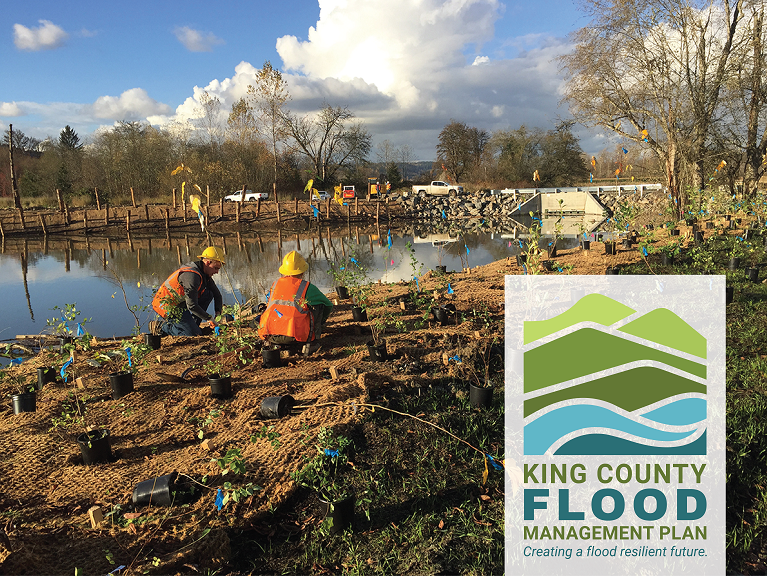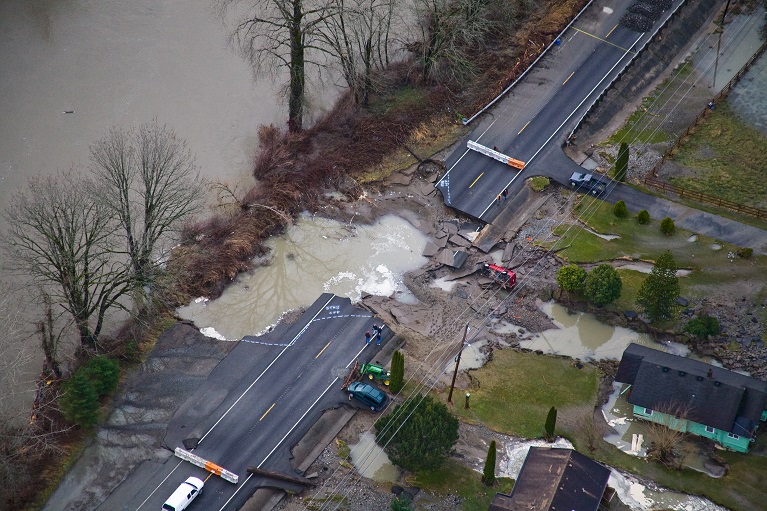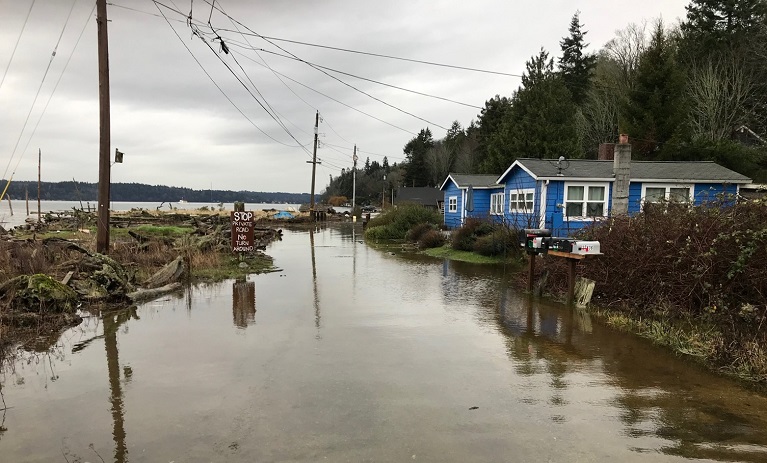King County Flood Management Plan
Public involvement summary
The public comment periods for the Draft Flood Plan and associated Draft Environmental Impact Statement closed mid-March.
During the comment period, King County hosted two online public meetings on Feb. 15 and March 7. Visit the King County Engagement Hub to view the presentations and videos from those meetings.

About the flood plan update
As our most common natural disaster, flooding is part of life in King County. The plan will set floodplain management policy for unincorporated King County and could inform flood management actions by cities, the King County Flood Control District, and other floodplain partners.
Our core values in developing the flood plan are:
- To stay community-centered.
- Embrace transparency and openness.
- Work with local partners.
- Strive for full accessibility.
- Have communities that are often left out of flood risk reduction conversations at the table.

Why is King County updating the flood plan?
Rivers and streams are alive—they change over time. King County last updated the flood plan in 2013. Since then, nearly 10 seasons of flooding have changed how our rivers look and function. Our population has grown, and we’ve added more homes and businesses to the landscape. How we develop land, manage waste, accommodate traffic, grow food, and recreate affects our rivers and coastal areas.
How will this flood plan be different?
To create a flood resilient future, the plan must represent the diverse perspectives of our community. Due to unjust historical practices, some communities are more at risk of flooding. Some people are less able to prepare or recover from flood disasters. Understanding what all communities need and their proposed solutions is King County’s priority.
Past plans have focused on flooding along King County’s major rivers. This plan will capture a broader range of flood hazards that affect people. It will include coastal flood hazards and sea level rise, small stream flooding, and urban flooding.
The updated plan will look for ways that we can reduce flood risks while delivering other community benefits. How can our projects and programs support farming or create new jobs? Improve salmon habitat and provide recreational areas? What's most important to you and what does your community need?
Partner Planning Committee
The Partner Planning Committee was one avenue for gathering public input on the flood plan, and the committee discussed topics addressed in the flood plan in depth through 10 meetings over 16 months. Learn more about the purpose of the committee and committee meetings on the Partner Planning Committee webpage.

State Environmental Policy Act process
An important part of our process to update the Flood Management Plan is to prepare an environmental impact statement (EIS). An EIS is a document that describes proposed actions and how they would affect the environment and people. Through the EIS process, King County analyzes potential impacts of the plan on threatened or endangered species, water quality, historical and cultural resources, transportation, and more.
King County explored the impacts of two scenarios, called “alternatives,” in the EIS. As a standard part of the EIS process, a “no action alternative” was considered. The analysis considered the impacts of not adopting the new flood plan (the no action alternative) and continuing to use the 2006 and 2013 flood plans to guide floodplain management policy and activities and also evaluated the impacts associated with adopting the new flood plan.
The County’s 2006 and 2013 flood plans focus on flooding and erosion hazards on major rivers and streams like the Snoqualmie and Cedar rivers and Issaquah Creek. The new flood plan proposes to address flooding more broadly on smaller streams and tributaries, lakes, and in urbans and coastal areas. Public comments from the EIS scoping period confirmed this broader scope has the potential to result in better outcomes for King County communities.
Scoping period (completed in 2022)
The scoping period was a formal opportunity for public input. We invited the public, tribal governments, and local, state, and federal agencies to comment on the range of alternatives, areas of impact, and possible mitigation measures that should be evaluated within the EIS.
A 30-day comment period was held from Monday, Nov. 7 to Friday, Dec. 9, 2022. The submitted comments provided valuable information about topics to consider in evaluating potential environmental impacts. We also received comments that are not applicable to the EIS analysis but are relevant to the flood plan itself, and those comments will be considered as part of plan development.
Past flood plans
The most recent flood plan was completed in 2006 and adopted by King County Council in January 2007. The flood plan was last updated in 2013 and adopted by King County Council with the passage of Ordinance No. 2013-0419.
Download the 2006 flood plan and 2013 flood plan update. These reports are provided in Adobe Acrobat .pdf format.
2006 King County Flood Hazard Management Plan (16.6 MB)
2013 King County Flood Hazard Management Plan Update and Progress Report (4 MB)
Printed copies of the 2006 flood plan and 2013 flood plan update are available at the following King County libraries:
- Auburn Library
- Bellevue Regional Library
- Bothell Regional Library
- Carnation Library
- Duvall Library
- Fairwood Library
- Fall City Library
- Issaquah Library
- Kent Library
- Maple Valley Library
- Muckleshoot Library
- North Bend Library
- Redmond Regional Library
- Skykomish Library
- Snoqualmie Library
- Tukwila Library

 Translate
Translate